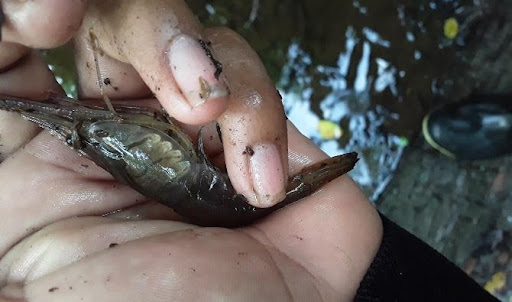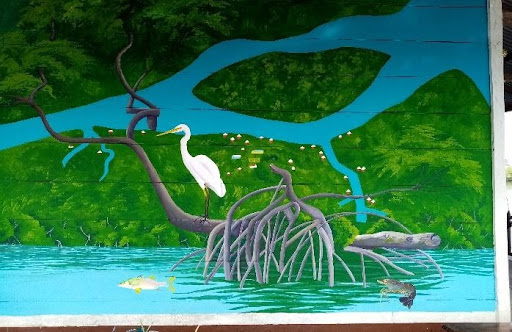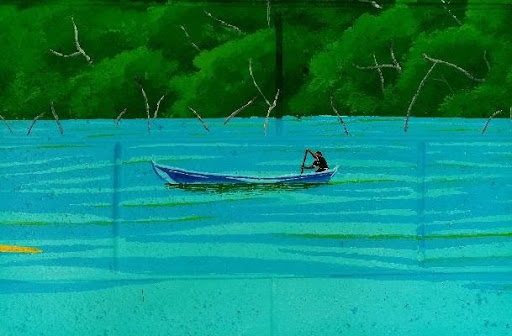Murals and Mangroves
- Barbara Vallarino

- Nov 15, 2021
- 3 min read
Updated: May 9, 2022
The Sarstun River Multiple Use Area (AUMRS) is home to extensive mangrove forests and is an internationally recognized Ramsar site. Mangroves are one of the most fragile ecosystems. They are highly susceptible to degradation and deforestation due to coastal development and resource extraction. This post highlights how our team uses visual arts to inspire the Restoration and Monitoring of the Mangrove Ecosystem with Community Leadership in the communities of San Juan and Barra Sarstún of the Municipality of Livingston Izabal, Guatemala.

This initiative focuses on the implementation of management, protection, conservation, restoration, and monitoring measures of the mangrove ecosystem. These strategies were co-developed with our local partner APROSARSTUN and communities, using participatory methods and planning processes. One important component is raising the awareness of future conservation leaders about the importance of mangroves through environmental education. We worked with local artist Oscar Humberto Pirir Cotzojay, trained in Visual Arts with a specialization in painting, to develop two murals with the participation of 30 local youth.
For Oscar, murals are like static films. They can beautify urban areas and public spaces and promote the art, folklore, and culture of the region. By artistically depicting wild mangrove species, he seeks to promote and disseminate to the general public an aesthetic visual communication between the artist and the viewer.
Collection of Scenic Photographs
As a first step, the young participants from San Juan and Barra Sarstún were asked to take photographs in their community or contribute ideas of places that they considered to be representative landscapes. Taking into account the aquatic and terrestrial landscapes of each region as a reference, they also contributed ideas of local animals that are part of the ecosystem of each region.
The group documented the scenery around their village. Along the water, they hugged the coast and surroundings, collecting images of the mangroves, birds, other villagers, and the artisanal fishing common in the region. Community leaders supported the process, reminding the youth of the importance of mangrove restoration for the sustainable development of their community.
Development of the Murals
After the photos were collected, participants gathered in the village school. Half of them would arrive in the morning and the other half in the afternoon during the development of the entire project--following social distancing protocols.
The instructor provided guidance, feedback, and support throughout the development of each mural. He taught artistic techniques such as freehand drawing and the use of adequate proportions given the space available.
The youth and community leaders decided what they wanted their mural to depict. They requested an aerial map of the community and the river, as well as species they considered important: pelicans, white herons, blue shrimp, snook, mackerel, and crabs.
The wall was then cleaned with water and a broom to remove the dirt. White paint was applied as a base to make the drawings. The sketches of birds, shrimp, and fish were transferred to the wall. Following the teacher's instructions, each element was put in its proper place, with the appropriate proportion, color, and shape.
The instructor showed participants basic painting techniques, such as how to apply the paint with brushes of different sizes and how to hold the brushes. They started with only three primary paint colors: blue, yellow, and red. Mixing these they developed the secondary, tertiary, and neutral colors, black, gray, and, brown. White was used to lighten the tones.
After the murals were completed, the participants, community leaders, and our project staff discussed the importance of mangroves.
Learning and Discussion
Concluding the experience, lessons learned included the important set of ecosystem functions mangroves perform, for example: acting as a hatchery for many species; a water purifier; a shoreline protector; and a home to local and migratory birds. In this way, mangroves contribute to keeping the aquatic and terrestrial ecosystem in balance.
The negative environmental impact of mangrove degradation, such as soil erosion and the reduction of fishing resources, emerged as a concern. They discussed the benefits of restoring and sustainably using mangrove resources. The young participants and community leaders reflected on how they can contribute to the conservation of mangroves in the region.
In sharing artistic knowledge with the young people of the villages of San Juan and Barra Sarstún our shared aim is to develop their talents and creativity so they continue promoting environmental education and the visual arts to conserve the mangrove species of the Maya Caribbean.
We are grateful to the Mesoamerican Reef Fund (MARFund) and the MAR2R initiative for their support and collaboration in this project.
Learn more about our work with APROSARSTUN in the Sarstun River Multiple Use Area.
.png)




















































Comentarios